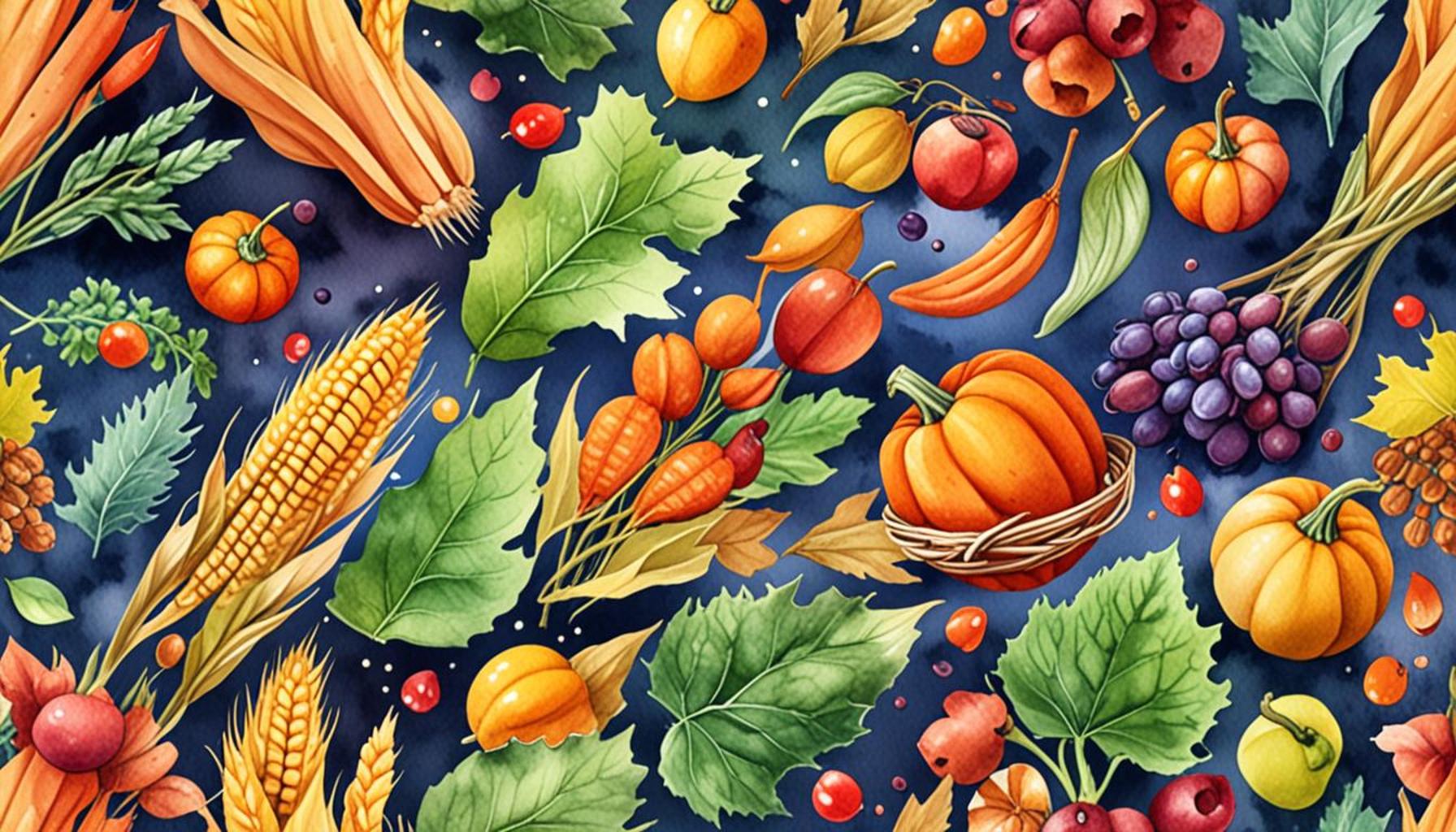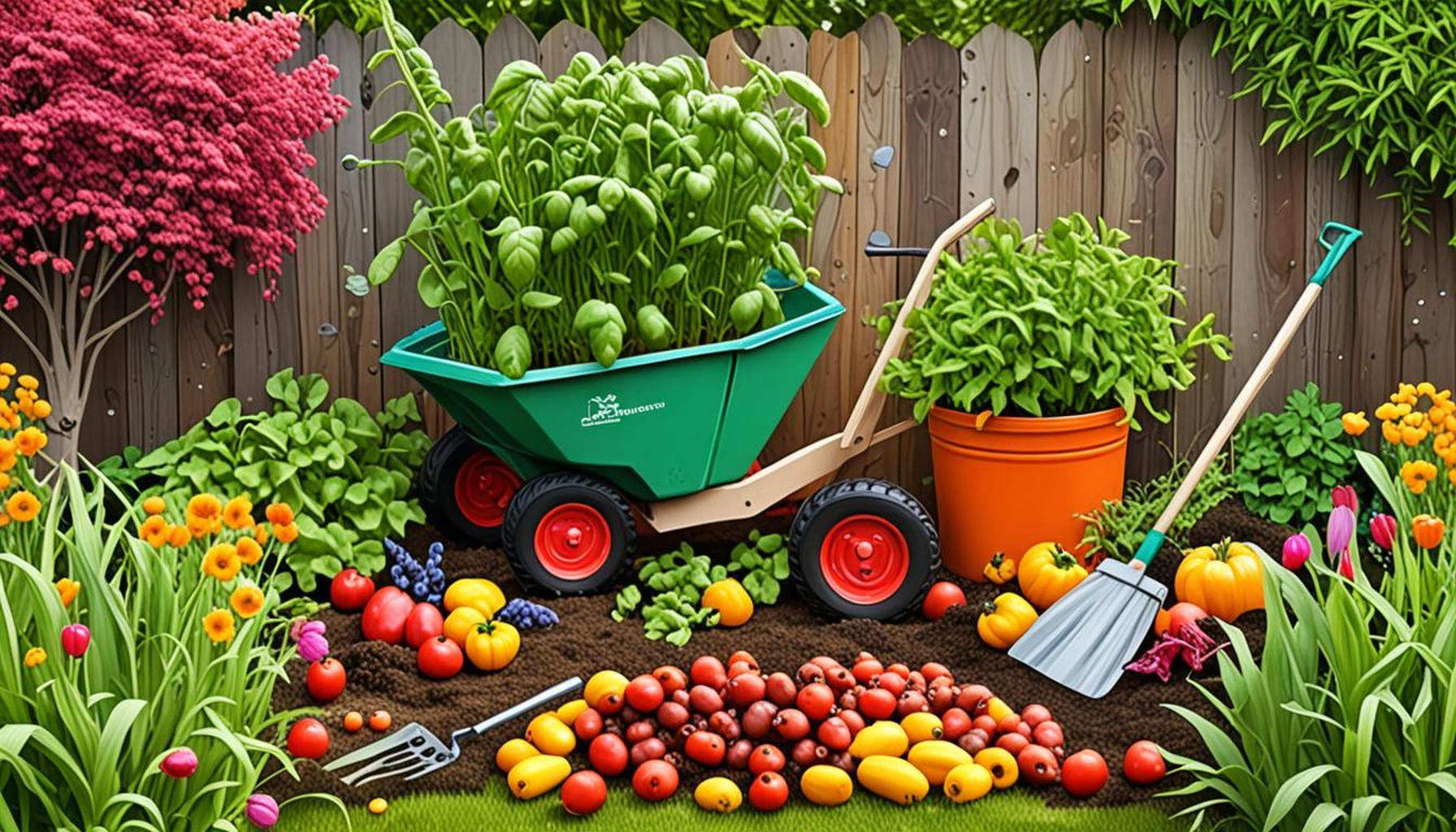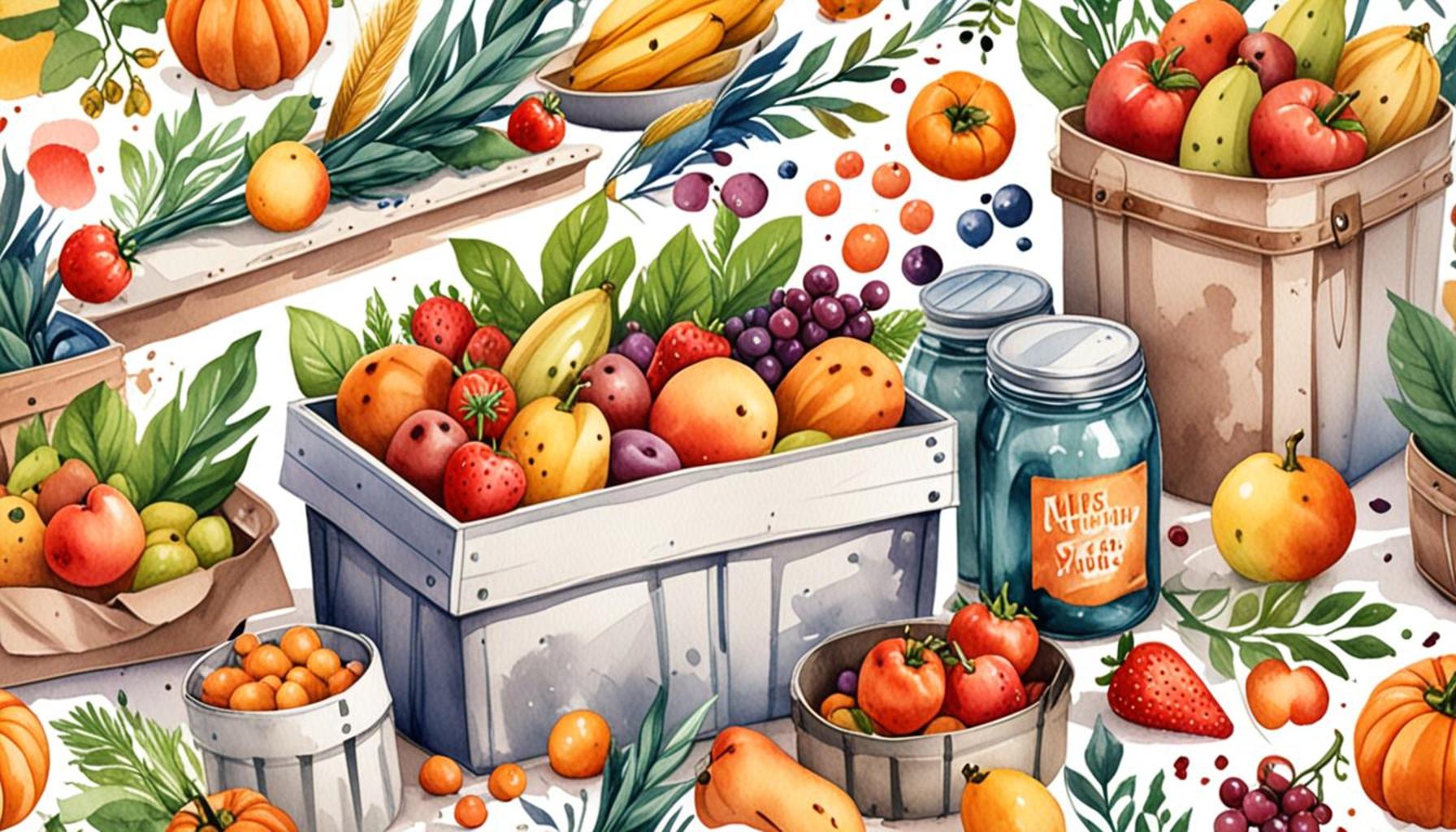Harvesting in Different Seasons: Adapting Your Techniques to the Climate

Understanding the Complexities of Harvesting
The cycle of harvesting is as unpredictable as the weather itself. Across the United States, farmers face unique challenges and opportunities throughout the year. Understanding how to adjust harvesting techniques to align with varying seasonal climates can lead to more successful outcomes. Every season brings its own set of variables that can significantly influence agricultural productivity.
Farmers are continually challenged to adapt their strategies to ensure optimal crop yield. They must consider several factors that influence their harvesting techniques, including:
- Regional Climate: Different areas experience distinct weather patterns. For instance, the Pacific Northwest benefits from a temperate climate, promoting the growth of crops such as berries, whereas the arid landscapes of the Southwest focus on drought-resistant varieties like cacti and hardy grains.
- Crop Type: Not all crops mature at the same pace or require identical harvesting methods. For example, grains such as wheat or barley often require precision timing to harvest, while leafy greens can be cut multiple times for successive yields.
- Soil Conditions: Moisture levels and soil quality vary dramatically with the seasons. Areas affected by heavy rains may face the risk of soil erosion, requiring farmers to adopt no-till farming practices to maintain soil integrity while balancing harvesting schedules.
For instance, cool-season crops like broccoli and kale thrive in the spring and fall, taking advantage of cooler temperatures. Meanwhile, warm-season crops such as tomatoes, corn, and peppers flourish during the summer months when these vegetables can bask in the sun’s rays. Adjusting harvesting techniques to accommodate these variations is crucial for maximizing yield and quality.
Moreover, awareness of climate trends can help farmers make informed decisions about their crops and practices. As weather patterns become increasingly erratic—exemplified by late frosts or unexpected droughts—strategies must evolve:
- Utilizing drip irrigation helps conserve moisture during dry spells, allowing crops to thrive while minimizing water waste.
- Implementing poly-tunnels for temperature control assists in extending the growing season by protecting crops from early frosts and excessive heat.
- Experimenting with cover crops can enhance soil health, improve nutrient retention, and reduce erosion, ensuring a more robust foundation for future crops.
In this article, we will dive deeper into how to effectively adapt your harvesting strategies in response to shifting seasons and climate conditions, ensuring your agricultural practices remain sustainable and productive. Knowledge of these factors will not only improve yields but also contribute to the long-term viability of farming operations in the United States. Understanding these dynamics prepares farmers for success in an increasingly variable climate landscape.
LEARN MORE: Click here for essential tips
Adapting to Seasonal Changes
Successfully navigating the landscape of harvesting requires a keen awareness of seasonal changes and their impact on crop readiness. Each season offers farmers distinct benefits and challenges, and recognizing these variations can greatly influence productivity. The key lies in understanding the intricate relationship between the climate and the harvesting techniques one employs.
In spring, colder temperatures provide an ideal environment for the growth of cool-season crops like peas, lettuce, and radishes. With precipitation levels often rising during this time, farmers must be vigilant about soil moisture management. Heavy rains can lead to waterlogged fields, making it crucial for farmers to time their harvesting to prevent equipment from getting stuck and to ensure crops do not spoil while still in the ground. Using specialized equipment such as all-terrain harvesters can facilitate operations in challenging conditions.
Moving into summer, the heat and longer daylight hours create a thriving atmosphere for warm-season crops. Crops like corn and tomatoes reach their peak ripeness during this period, and farmers need to be proactive in their harvesting techniques. Early morning or late evening harvesting can prevent heat stress and maintain crop quality, particularly for delicate fruits. Additionally, implementing shade cloths can protect crops from extreme temperatures, allowing farmers to optimize their harvesting windows.
As fall approaches, the focus shifts once again. The cooling temperatures signal the end of the growing season for many crops, but it is also a crucial time for harvesting annual grains like wheat and barley. Quick decision-making becomes essential, as farmers must assess moisture levels and determine the optimal time to gather their harvest. Factors such as freezing temperatures can interfere with the harvesting process, making it vital to monitor local forecasts and assess crop conditions continuously.
Farmers also face unique challenges during winter. While many regions see a halt in traditional farming activities, those specializing in winter crops or utilizing greenhouses can take advantage of this time. Techniques such as hoop houses or cold frames allow for continued cultivation, enabling the harvesting of crops like kale or carrots. These structures provide protection against frost and extended periods of low temperatures, effectively transforming off-seasons into productive times.
In the United States, understanding these climatic nuances can distinguish successful farmers from the rest. A detailed analysis of local weather patterns, soil conditions, and crop types sets the stage for informed harvesting decisions. As climate variability continues to escalate, embracing adaptive techniques will be pivotal in securing sustainable practices that bolster yield, especially as the agricultural landscape evolves. The importance of continuous learning, innovation, and resilience becomes clear as farming adapts to the shifting seasonal climate.
| Technique Adaptation | Expected Outcomes |
|---|---|
| Seasonal Crop Rotation | Improved soil health and enhanced nutrient availability. |
| Climate-Specific Timing | Maximized yields by aligning harvest times with regional climate patterns. |
| Water Management Strategies | Enhanced crop resilience to drought or excessive rainfall. |
| Use of Cover Crops | Promotion of biodiversity and prevention of soil erosion. |
In the pursuit of effective agricultural practices, seasonal crop rotation serves as a vital technique that greatly contributes to optimizing the health of the ecosystem. By rotating different crops throughout the year, farmers actively promote soil health and enhance nutrient availability, enabling plants to thrive across various conditions.Utilizing climate-specific timing for harvest is equally important. By understanding and adapting to local climate patterns, farmers can significantly improve their yields by planting and harvesting at the most opportune times. This strategic approach minimizes crop stress and aligns agricultural activities with seasonal changes.Moreover, implementing water management strategies enables crops to withstand challenges posed by drought or excessive rainfall. By integrating techniques such as rainwater harvesting or drip irrigation, farmers can mitigate water scarcity issues and ensure a more sustainable yield.Additionally, the introduction of cover crops enriches the soil’s health and fosters biodiversity. These plants, which are grown during off-seasons, play a critical role in preventing soil erosion and enhancing organic matter content. As we evolve our harvesting techniques to match the rhythm of changing climates, understanding these vital components becomes essential for successful agriculture.
DIVE DEEPER: Click here for vital insights
The Impact of Regional Variations on Harvesting Techniques
While the seasonal changes provide a fundamental framework for harvesting, regional variations significantly influence how these techniques are adapted in practice. The vast expanse of the United States presents farmers with diverse climates, from the humid subtropical regions of the Southeast to the arid deserts of the Southwest and the temperate zones of the Northeast. Each geographical region requires tailored harvesting strategies to maximize productivity while respecting local environmental conditions.
In the South, where the growing season is considerably longer, farmers often take advantage of double-cropping. This involves growing two different crops in the same field one after the other during a single growing season. For example, Southern farmers may plant soybeans after harvesting a winter wheat crop, effectively utilizing every inch of arable land. Here, effective harvesting techniques include combine harvesters equipped to handle a variety of crop types and enable quick transitions between different harvests. Regular adjustments to machinery are important to address the diverse crop conditions typically faced.
Conversely, in the Northern regions, where shorter growing seasons pose challenges, farmers often employ row covers and season extenders to create micro-climates that enhance crop yield. These techniques allow for earlier planting and later harvesting, thus maximizing the potential returns. The timing of harvesting is critical; crops must be gathered before the onset of frost, which can significantly impact quality and reduce yield. Farmers in these areas often rely on weather tracking technologies to effectively time their harvests, ensuring the productivity of grain crops like barley and oats.
The Western United States, known for its substantial fruit and vegetable production, presents unique considerations. Here, irrigation systems play a crucial role in managing water supplies during hot summer months. Techniques such as precision harvesting using GPS-guided equipment enable farmers to maintain optimal crop quality while adhering to sustainable water practices. Effective irrigation management coupled with timely harvesting can increase a fruit’s sugar content, subsequently enhancing its market value. For crops like grapes, carefully timing the harvest to coincide with peak sugar levels is essential for wine production, displaying how regional adaptations can significantly influence quality.
As climate change increasingly alters traditional weather patterns, farmers across the U.S. must also be prepared to adapt their harvesting techniques accordingly. The rise in unpredictable weather events, such as extreme rainfall or drought, demands an agile approach. Techniques such as no-till farming and the use of cover crops not only contribute to soil health but also fortify crops against climate extremes, thus enhancing resilience. Farmers are advised to routinely analyze soil health and moisture content, which can guide timely interventions in harvesting strategies.
Ultimately, the tapestry of harvesting across various seasons and regions underscores the necessity of continuous adaptation and innovation. Farmers armed with the knowledge of regional specifics, seasonal dynamics, and the impending implications of climate change will stand a better chance at sustaining their yield and ensuring food security for future generations. As exploratory research continues to unfold, embracing new technologies and methodologies will prove vital in cultivating a thriving agricultural sector amidst shifting seasonal climates.
DISCOVER MORE: Click here to learn the best practices for harvesting fresh herbs at home
Conclusion
In conclusion, the practice of harvesting in different seasons necessitates a profound understanding of not only local environmental conditions but also of the broader impacts of climate variability. As farmers navigate the diverse climatic landscapes across regions in the United States, the adaptability of their harvesting techniques plays a critical role in ensuring productivity and sustainability.
The agricultural framework relies heavily on regional knowledge, where adaptations such as double-cropping in the South or utilizing season extenders in the North showcase the innovative spirit required to thrive amidst changing seasons. Furthermore, as highlighted in the Western United States, practices like precision harvesting and efficient irrigation management indicate a forward-thinking approach that not only boosts crop quality but also aligns with sustainable practices.
With the looming effects of climate change resulting in unpredictable weather, the agricultural community is challenged to remain agile, embracing techniques such as no-till farming and crop diversification to bolster resilience. This proactive stance fosters not only the immediate health of the crops but also the long-term viability of the land.
Ultimately, a commitment to innovation combined with a deep respect for seasonal trends and regional characteristics will empower farmers in their quest for resilience against the evolving climate. As we look ahead, continuous research and the adoption of emerging technologies will be paramount in cultivating effective harvesting strategies that secure food resources for today and the future, marking a significant step towards sustainable agriculture.


